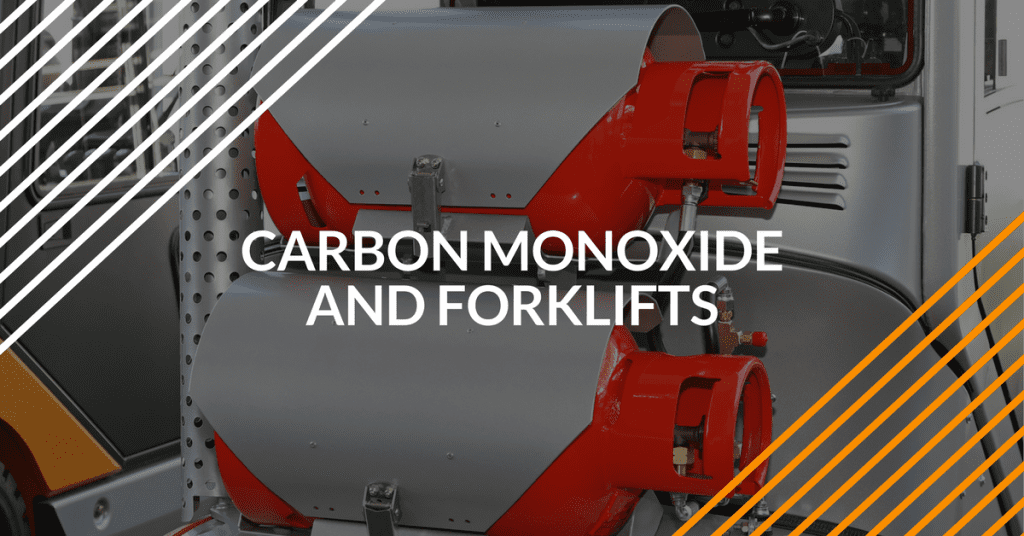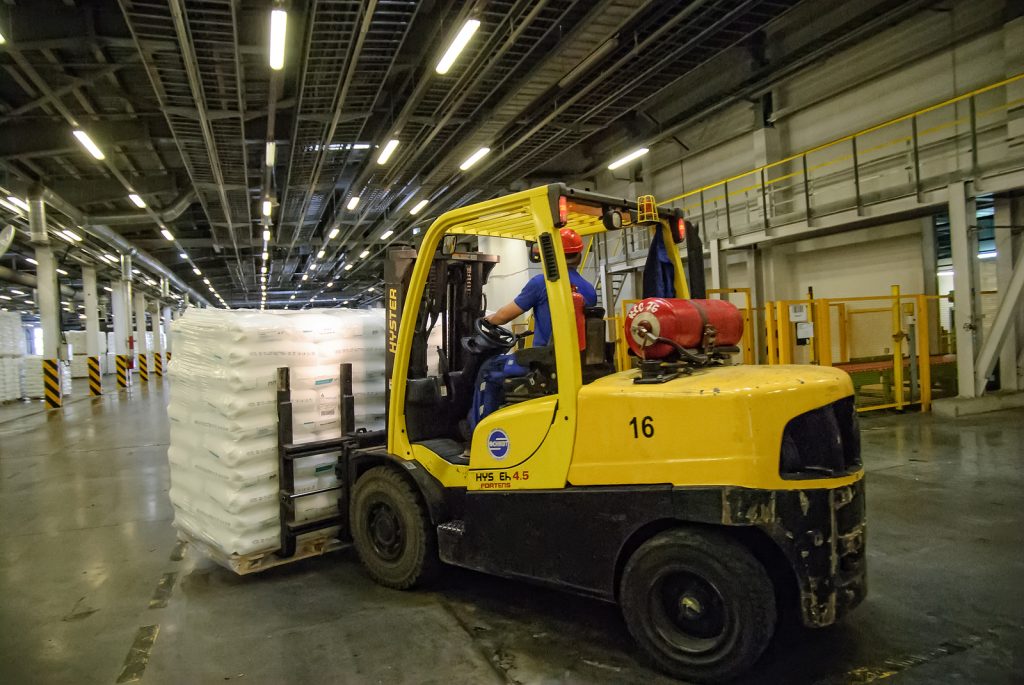All About Carbon Monoxide and Forklifts

Forklift carbon monoxide presents a real threat to those who operate a gas-powered truck. That’s why OSHA treats it as a serious danger to the safety of forklift drivers. Their regulations and training guidelines focus on two main areas. One is how to identify the presence of carbon monoxide buildup. The other is how to prevent poisoning from this noxious gas.
This blog, written by the OSHA training experts at Forklift Certification, will cover three key topics:
- The risks presented by high forklift carbon monoxide levels
- How to avoid carbon monoxide on the job
- Tips you can use in your daily forklift duties
But first, let’s take a crash course in what exactly carbon monoxide is.
Carbon Monoxide and Forklifts
Carbon monoxide is commonly referred to as CO. This means it is comprised of one carbon molecule and one oxygen molecule. According to the U.S. Environmental Protection Agency, carbon monoxide occurs when something is burned. This produces CO fumes that can be lethal in enclosed areas. Why is CO so dangerous? Because it is both colorless and odorless, making it hard to detect. Why is it lethal to humans? Because it robs the body of oxygen.

The air we breathe is 99% nitrogen and oxygen. The other 1% contains a small amount of other trace elements. Air with too much CO doesn’t have enough oxygen. Inhaling a large amount of CO reduces your body’s oxygen supply. As a result, the brain, lungs and other organs don’t get the oxygen they need to function properly. The effects of breathing CO include dizziness, severe headaches, nausea, and confusion. Too much CO can lead to unconsciousness and death.
Fossil fuel forklifts create carbon monoxide by burning fuel in an internal combustion engine. Some engines use gasoline. Others use diesel fuel. Most forklifts use a fuel-powered engine, but electric trucks are becoming more common. Thus, carbon monoxide and forklifts aren’t going away anytime soon. That can be a fatal combination.
How to Prevent Carbon Monoxide Buildup
Indoor CO occurs throughout the year, but it becomes more dangerous during winter. That’s because doors and ventilation system dampers are kept closed. This can cause CO levels to rise to more than 10 times the permissible exposure level in a very short time.
The best way to avoid unsafe levels of forklift carbon monoxide is to prevent it from building up in the first place. This starts with knowing where forklift CO poisoning is most likely to occur. This includes:
- Cold rooms
- Controlled atmosphere rooms
- Truck trailers
- Sealed warehouses during fumigations
- Tunnels
- Underground storage facilities
- Shipping containers
- Poorly ventilated warehouse aisles
How to Avoid High Forklift Carbon Monoxide Levels
Any time a forklift engine is running, it is producing CO. This makes constant attention to indoor air quality mandatory.
OSHA standard 29 CFR 1910.178(p)(1) requires maintenance practices for forklifts. These include not using trucks when they are being serviced. In confined spaces, forklift engines should be shut down when not being used. Your work site’s ventilation system should also be well-maintained at all times.
Once or twice a year, hire an emissions testing firm to analyze the CO levels from your forklift exhaust. If needed, the technician can adjust the truck’s air and fuel mixture to control CO exhaust levels. Also, make sure the worksite has proper ventilation. Keep exhaust fans running and dock doors open when the weather allows.
Forklift Carbon Monoxide Safety Tips
Wherever there are gas-powered forklifts, there are CO emissions. In 2017, there were more than 2,000 OSHA violations that involved powered industrial trucks. Many involved carbon monoxide from forklifts working indoors or in confined spaces.
Use these techniques to keep CO levels within a safe range:
- Post CO warning signs in areas where forklifts are used.
- Don’t allow drivers to idle their trucks.
- Keep fuel-powered forklift engines well maintained.
- Keep forklift use to a minimum when possible.
- Use personal CO monitors with alarms in forklift travel zones.
- Use electric forklifts in unventilated areas.
- Equip your forklifts with a catalytic converter (if possible) to reduce CO emissions.
Most important, train forklift workers and managers to recognize the signs and symptoms of CO poisoning. These can range from dull headaches to shortness of breath, loss of consciousness, and more.
OSHA lists 11 areas that employers must clearly mark as enclosed and hazardous areas. To prevent CO poisoning, always follow your company’s area guidelines. When in doubt, ask your safety supervisor.
Stay CO Safe and Compliant with FLC Forklift Training
The best way to enhance forklift safety is with OSHA-approved training from ForkliftCertification.com. Our affordable online classes provide an efficient way to receive the training you need. They also reduce the chances of an on-the-job incident from CO emissions.
When you need to learn more about the dangers of forklift carbon monoxide, we’re here to help. Call us today at (888) 278-8896. We look forward to helping you avoid CO incidents at work – and other hazards that might come your way!